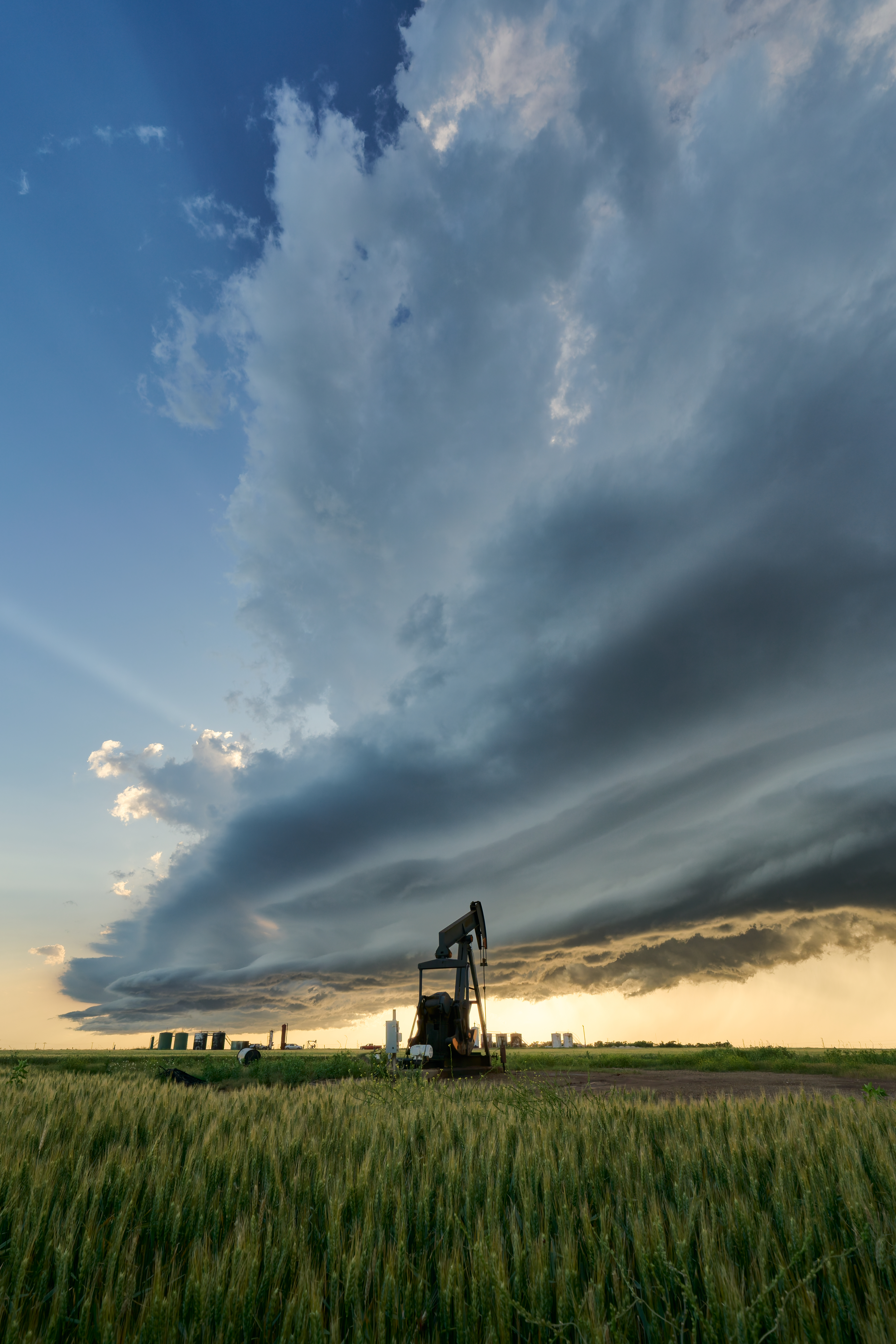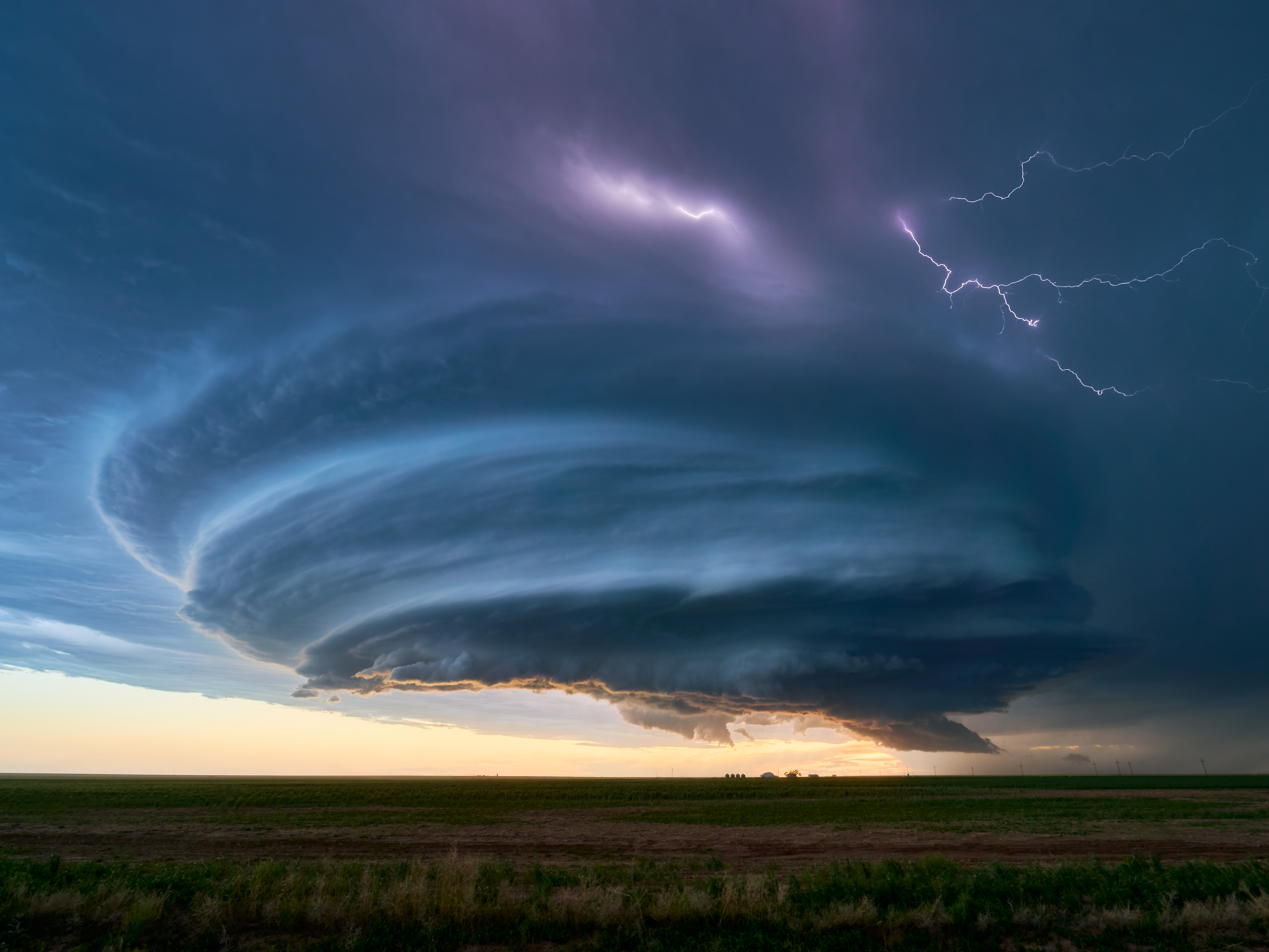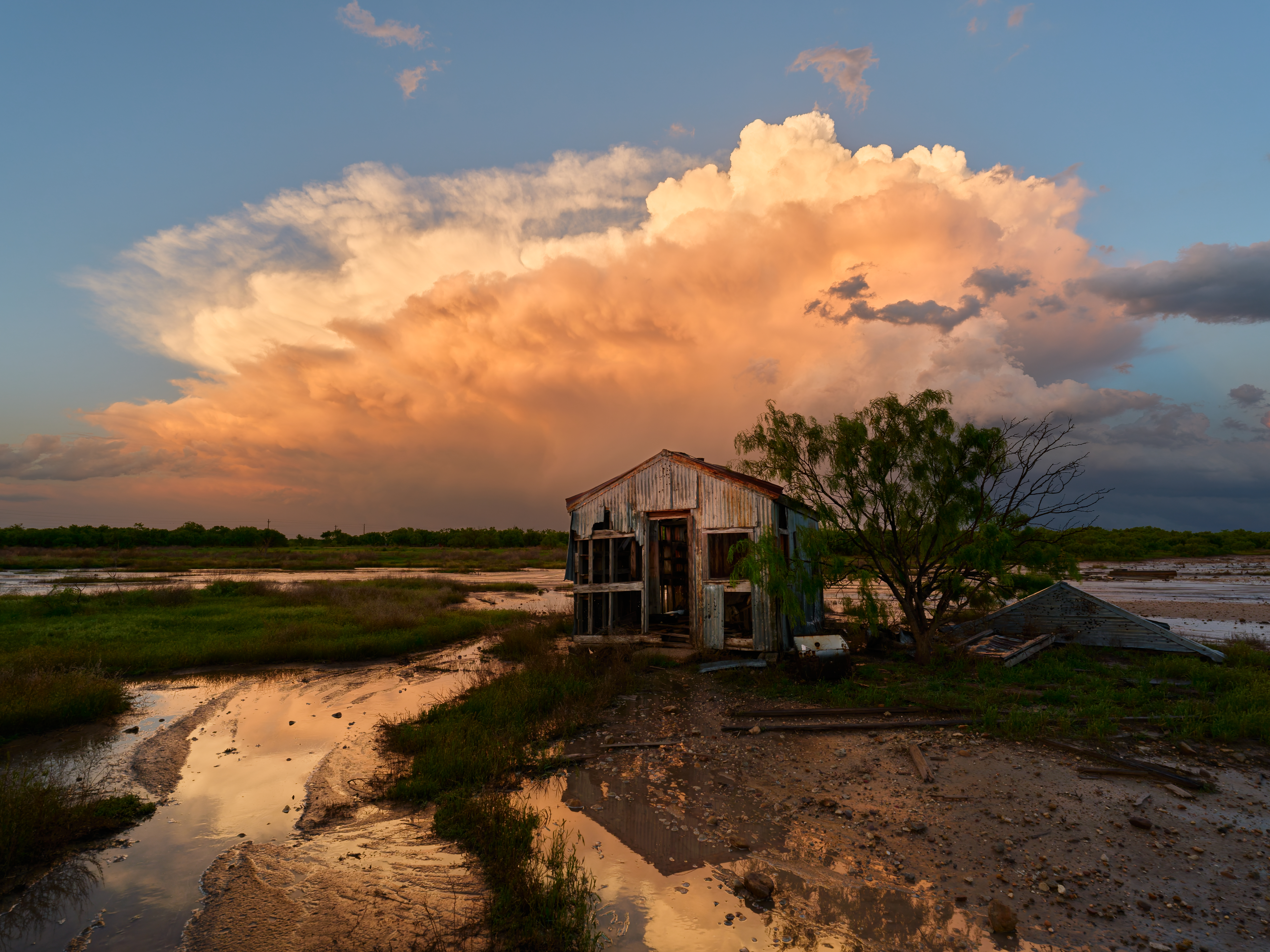
18. jul. 2025 / Bastian Klein
Storm Chasing in Tornado Alley
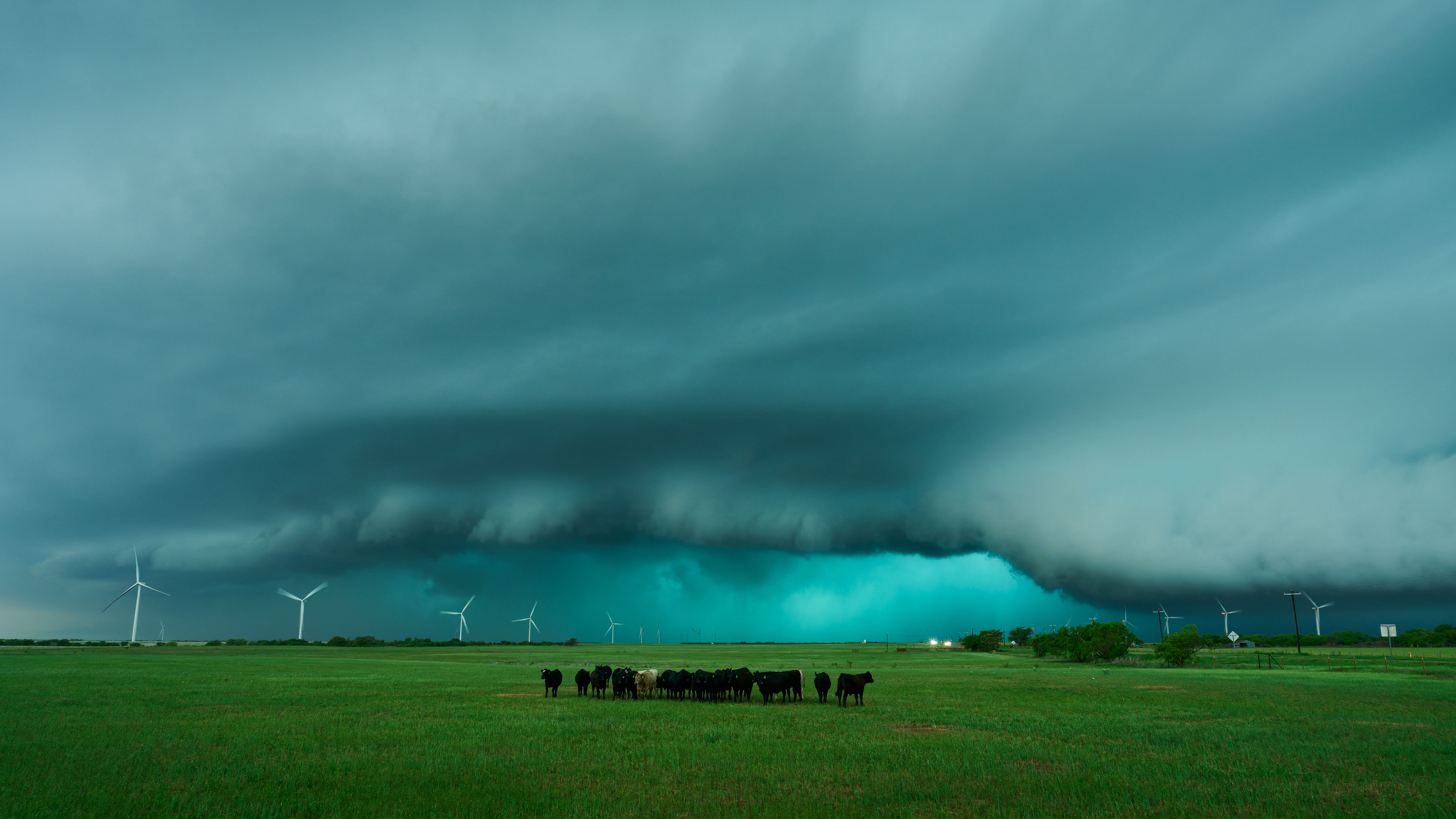
Storm Chasing in Tornado Alley
Armed with the TAMRON 17-50mm F/4 Di III VXD, photographer Bastian Klein sets out to chase storms – roaming the endless expanse of the Great Plains in search of towering supercells and elusive tornadoes. Always in pursuit of that perfect moment where beauty and danger collide.
A piercing siren cuts through the shimmering afternoon heat – a nearby town sounds the alarm. One glance at the sky reveals why: a supercell arches menacingly over the flatlands, its turquoise hail core glowing ominously behind a curtain of rain. I’m standing at the edge of a dusty country road, camera in hand, eyes locked on the rotating wall of wind and water. Somewhere in there, a tornado is raging.
II’m here as a photographer, right in the heart of Tornado Alley, to capture what can’t be controlled: the raw power of nature, its fleeting beauty, the light before impact. Storm chasing isn’t a test of courage – it’s a conscious decision. A choice for risk. And for images that can only be taken on a handful of days each year, in a few rare places on this planet.
The vastness of the Great Plains – especially the infamous Tornado Alley in the U.S. – offers some of the best conditions in the world to witness supercells and tornadoes up close. Nowhere else do cold air masses from Canada collide so regularly and forcefully with the warm, humid air sweeping in from the Gulf of Mexico. The result: massive, rotating thunderstorms – so-called supercells – that often give rise to tornadoes.
After some rather underwhelming storm chasing attempts in Germany, I decided to join a storm chasing tour led by Bastian Werner. As an experienced storm chaser, he knows exactly how to read the weather – and when it’s time to stop shooting and seek shelter.
My Storm Chasing Lens
When you’re out storm chasing, speed, durability, and versatility are everything. That’s why I deliberately chose the TAMRON 17-50mm F/4 Di III VXD – to avoid lens changes and keep dust and moisture away from the sensor. The 17–50mm focal range allows me to capture both the vast structure of a supercell and zoom in on striking details without missing a beat.
Storm chasing is pure adrenaline – but in reality, a typical chase day also involves a lot of planning and patience. We start reviewing weather models the night before to find the best target area for the next day. Depending on the forecast and distance, the alarm might go off very early… or very late, after finally collapsing into a hotel bed.
The actual chase day often begins calmly: with breakfast, a Walmart snack run, or a casual lunch stop. Hours of driving follow, until we reach the target zone. Then comes the waiting game – usually in a café or roadside diner, watching live radar updates and keeping an eye on the sky. And then, suddenly, patience turns into pure tension – and the chase is on.
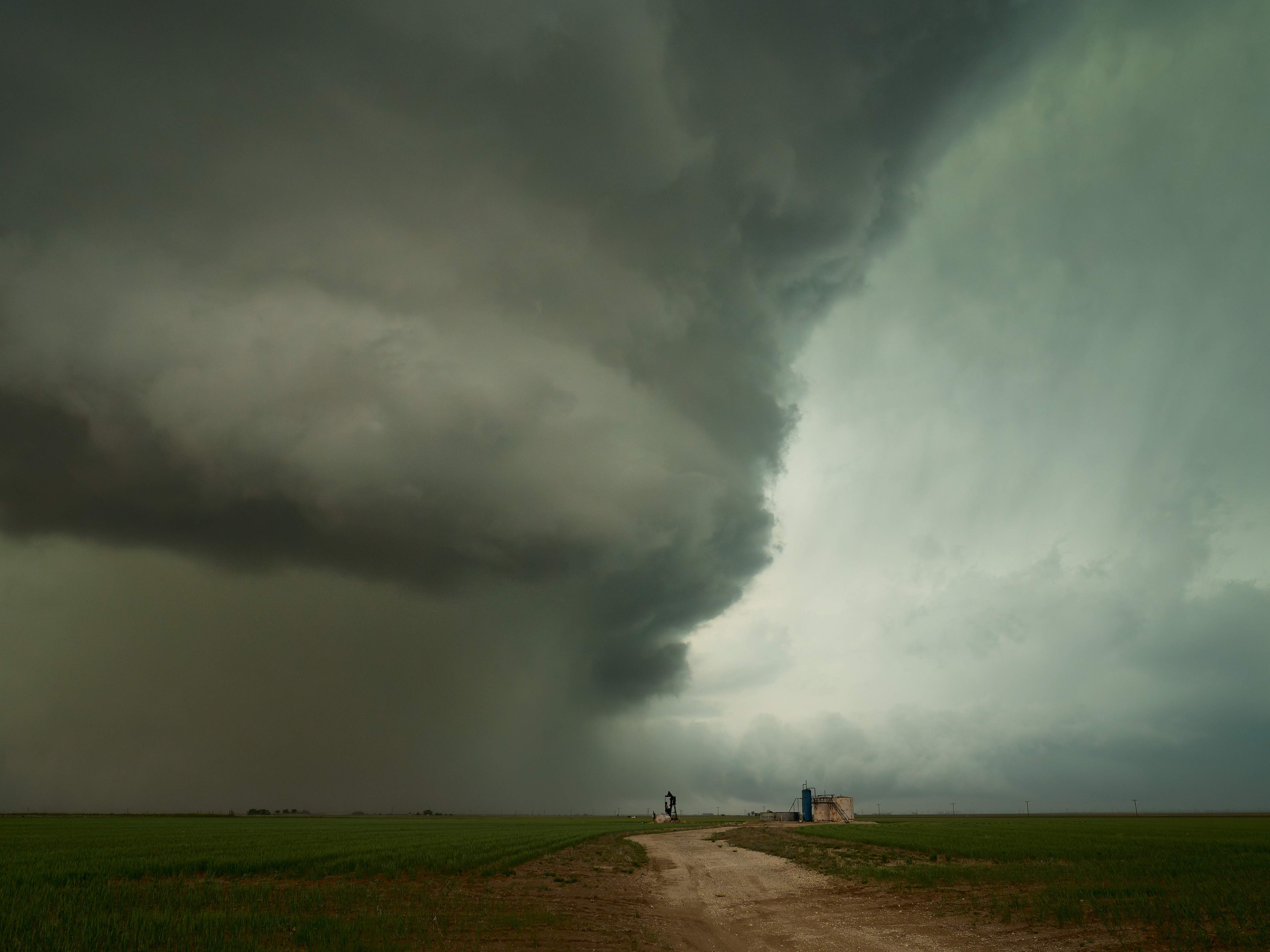
When the Sky Starts to Spin
On our very first day, we witness an awe-inspiring supercell that produces several short-lived tornadoes. The ultra-wide to standard zoom range proves to be ideal for capturing the full structure of the approaching, rotating storm cell – known as a mesocyclone. This is the powerful, rotating updraft at the heart of a supercell – and it’s here that tornadoes can form.
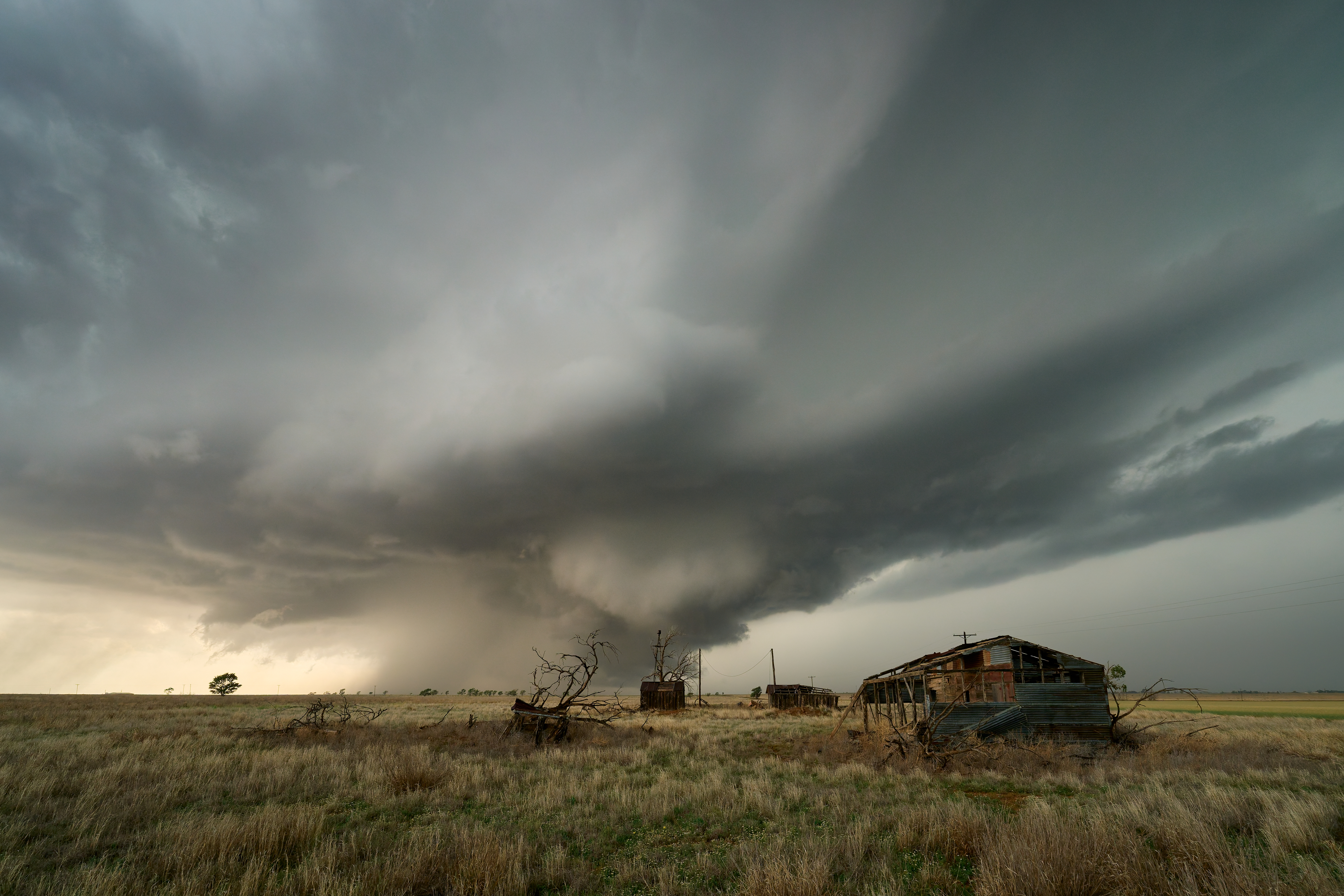
Our wish is granted: we spot a clearly visible, photogenic tornado forming right before our eyes. It begins with a graceful funnel descending from the base of the mesocyclone – slowly stretching downward until it touches the ground and becomes a full tornado. This is where the flexibility of the 17–50mm focal range truly shines: 17mm to capture the full scene – then a quick switch to 50mm for those dramatic close-up shots.
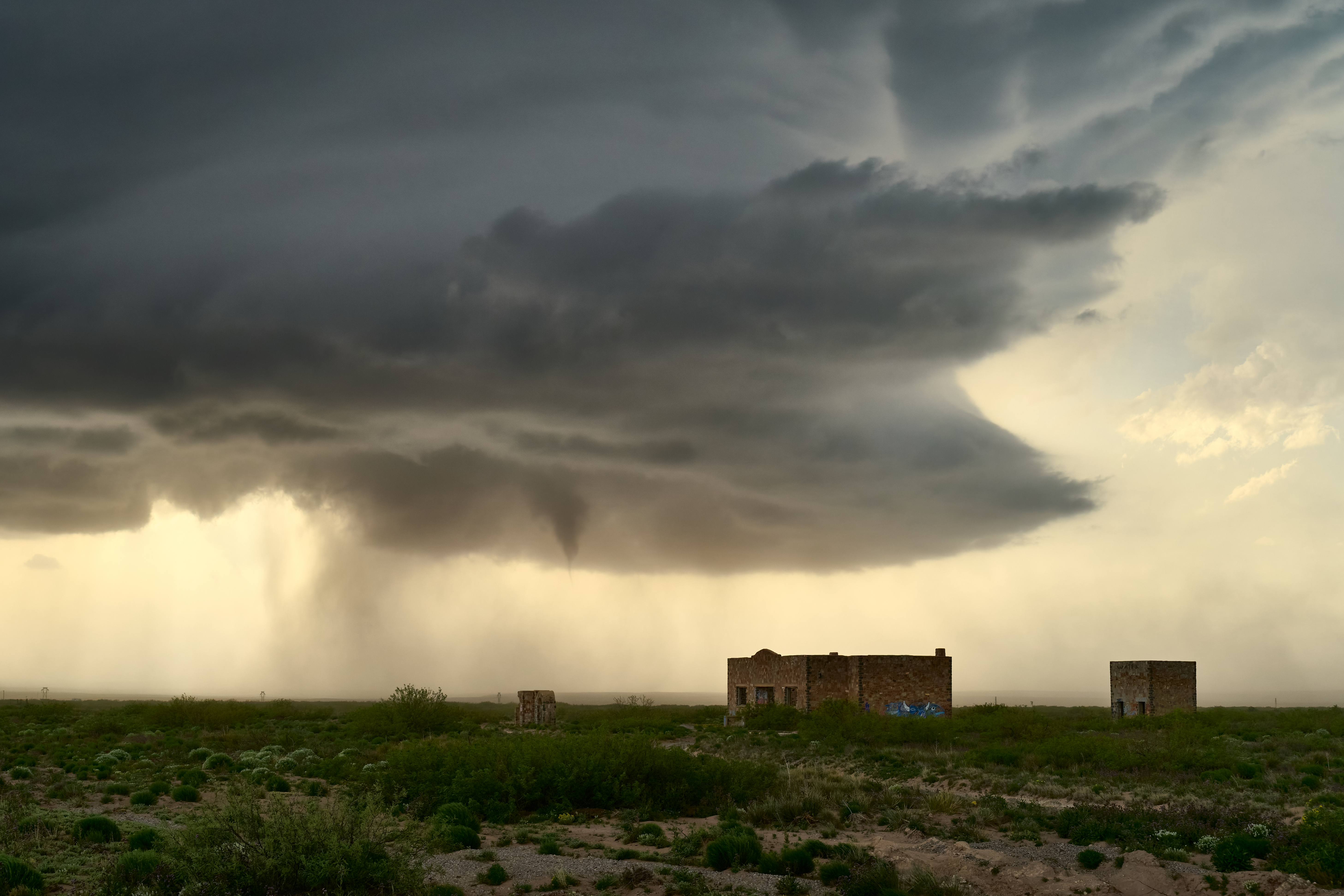
Downbursts and Rainbows
The most dangerous tornado of the trip wouldn’t reveal itself until later – a hidden vortex shrouded behind a wall of heavy rain. A so-called rain-wrapped tornado inside an HP supercell (High Precipitation), where the storm’s signature turquoise hail core becomes a visual trap. What looks mesmerizing from afar can turn deadly in an instant. This time, it’s not the sky that warns us – it’s the sirens, echoing across town, alerting residents of the life-threatening storm approaching.
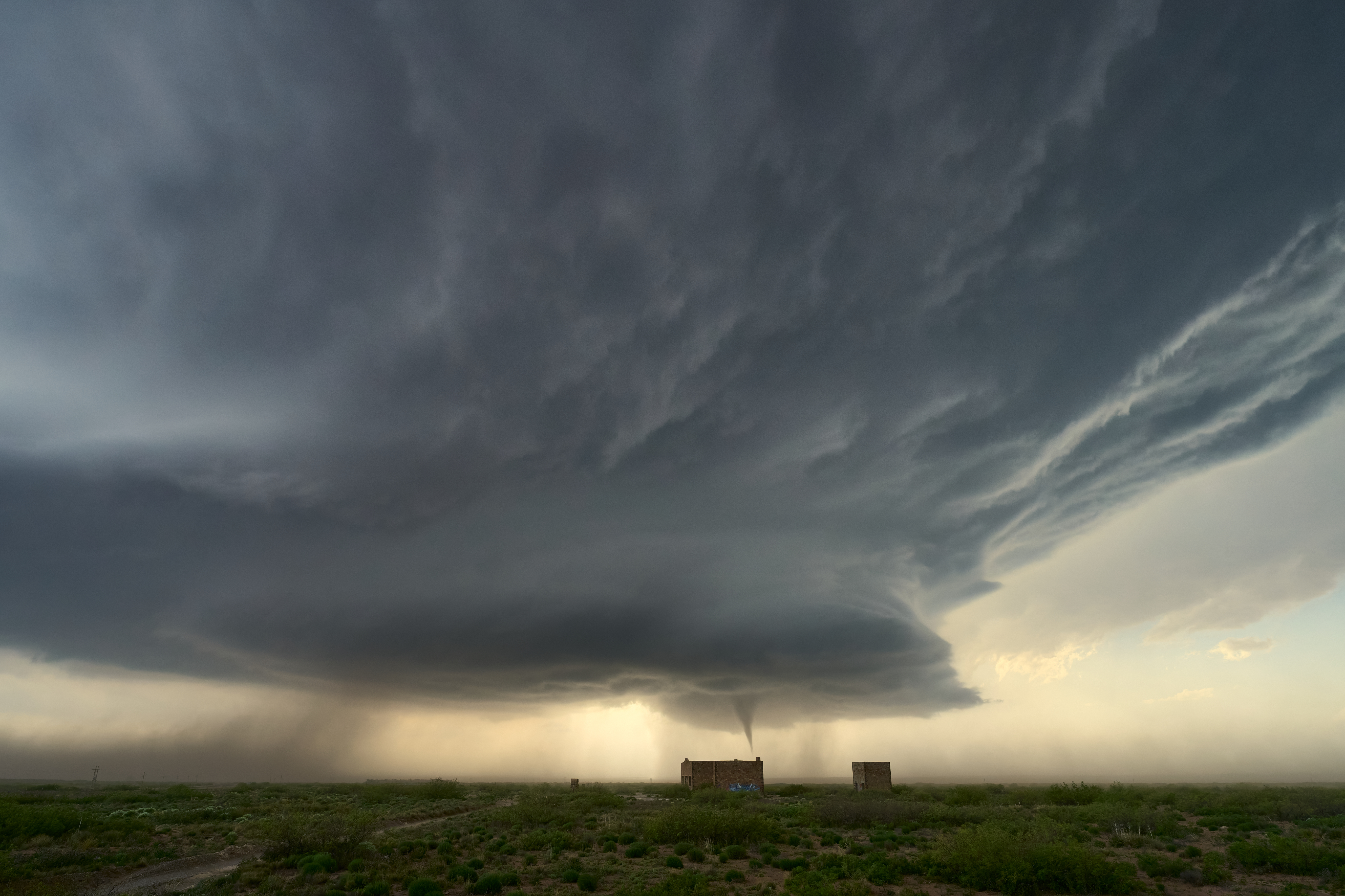
The true test – for both gear and photographer – comes in those critical moments when every second counts. There’s rarely time to calmly set up a tripod while storm chasing. Most of the time, I’m shooting handheld the moment I jump out of the car. Ahead of a supercell, it’s often dark, windy, and chaotic. Even in-body image stabilization has its limits – so I rely on shutter speeds faster than 1/100 sec to get sharp shots in these intense conditions.
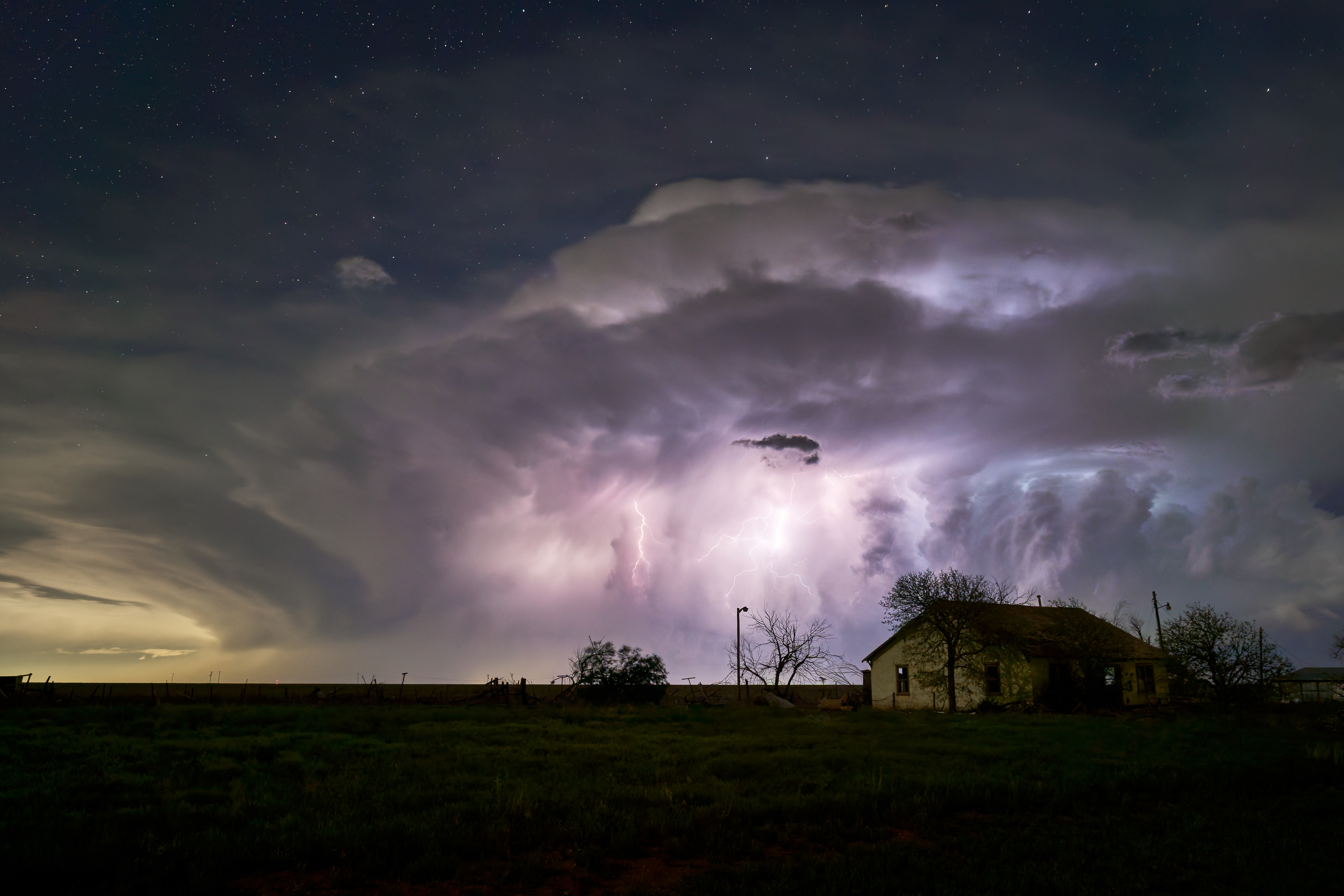
Magic in the Storm
The tripod truly comes into play when it’s time to capture lightning. For this, I shoot in interval mode using shutter speeds between 1/40 of a second and up to one full second – to catch the raw energy of the storm. When photographing lightning, especially at night, one rule always applies: Better to underexpose than to risk overexposing the frame – a bolt that’s too bright will burn out the photo entirely.
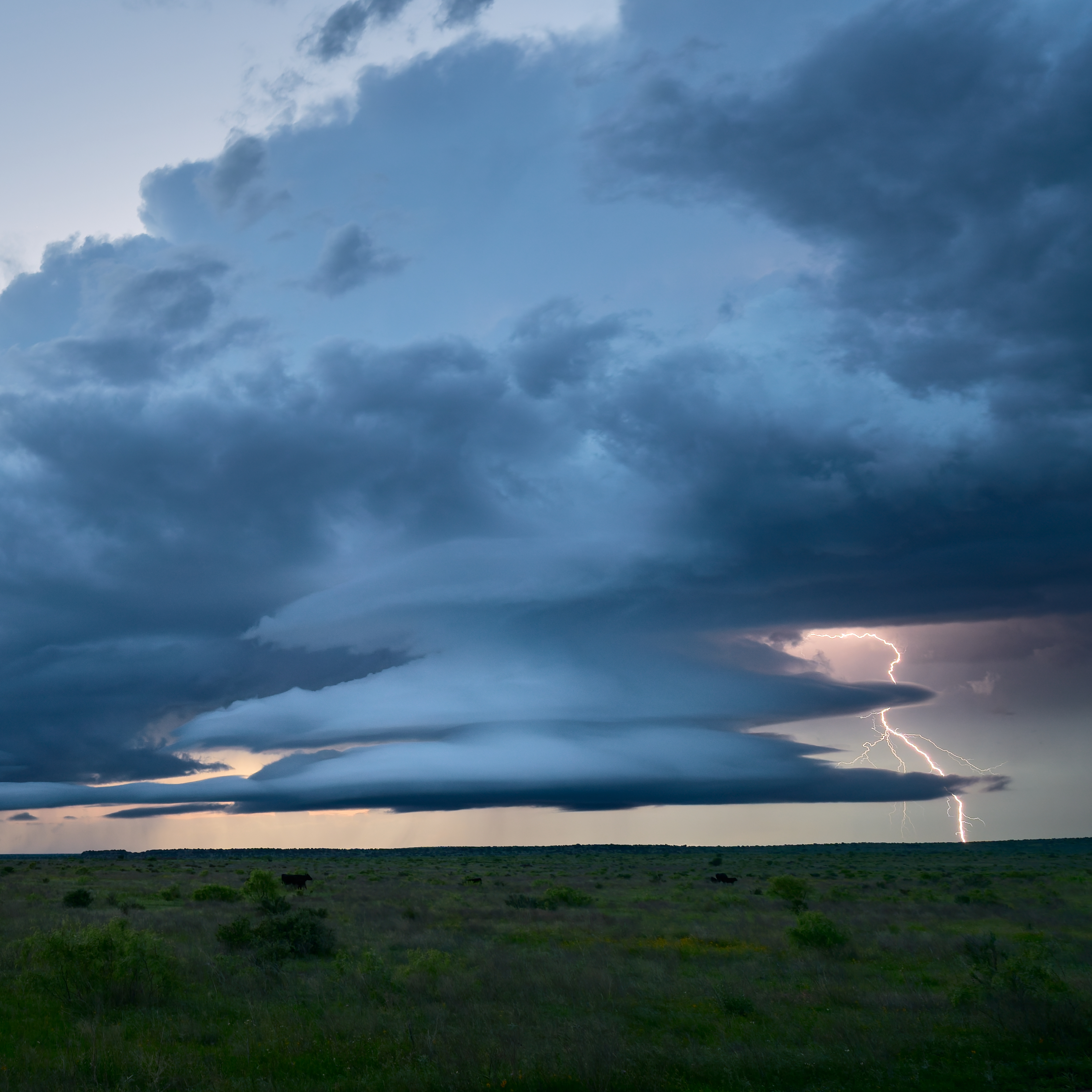
Not every major storm setup leads to the most spectacular photos. Sometimes it’s the cells that seem unimpressive at first that end up stealing the show. That’s what happened with what turned out to be my perfect supercell: at sunset, it evolved into a stunning structure – beautifully lit and accompanied by countless cloud-to-cloud lightning strikes.
In that moment, staying calm isn’t easy – but that’s exactly what’s needed. Take a deep breath, set the camera firmly on the tripod, adjust the exposure, and start interval mode.
With a shutter speed of around one second, I’m able to capture the lightning just right. By slightly underexposing the image, I make sure the sunset colors stay intact without blowing out the highlights. Only then do I allow myself a quick victory dance – and fully take in the moment.

Rare Treasures in the Night Sky
In addition to the dramatic HP supercells, we come across a particularly photogenic LP supercell (Low Precipitation) during our trip – standing out impressively after sunset against the reddish glow of an anvil cloud. LP supercells are characterized by low rainfall and reveal especially clear and delicate structures as a result. This cell treats us to striking cloud-to-cloud lightning and rare, red, lightning-like flashes – known as Red Sprites – which appear high above the storm in the mesosphere and last only a few milliseconds.
In Tornado Alley, weather photographers are met with an extraordinary range of subjects: from swirling tornadoes and towering supercells to the distinctive arcus clouds (shelf clouds), ominously rotating wall clouds, and spectacular mammatus formations. And time and again, there are breathtaking views of supercells glowing in the golden evening light.
A Perfect Symbiosis of Adventure and Technology
Looking through my images, I’m reminded again and again of how incredibly diverse and fascinating extreme weather can be. This wasn’t just a successful photography trip – it was an experience that deepened my appreciation for nature and its raw, overwhelming beauty. The TAMRON 17-50mm F/4 Di III VXD proved to be the perfect companion for these extreme conditions.
Storm chasing in the Great Plains – definitely an adventure I’d take on again in a heartbeat. And the TAMRON 17-50mm will be right there with me.
About the author: Bastian Klein

Bastian Klein is a passionate hobby photographer with a focus on landscape and astrophotography. Back in late 2020, as a photography beginner, he successfully participated in the Tamron Creativity Contest in the landscape category. For the perfect shot, he stands above the morning mist at dawn or beneath a sparkling starry sky late at night – always carefully planned and firmly convinced that the effort is worth it. True to his motto, “Photography is passion,” he creates images designed to evoke a true “wow” effect in the viewer.
TAMRON products mentioned in this article
17-50mm F/4 Di III VXD
Model A068

